Home > Articles > The Archives > The Sullivan Family — Goodwill Ambassadors of Bluegrass Gospel
The Sullivan Family — Goodwill Ambassadors of Bluegrass Gospel
Reprinted from Bluegrass Unlimited Magazine
October 1980, Volume 15, Number 4
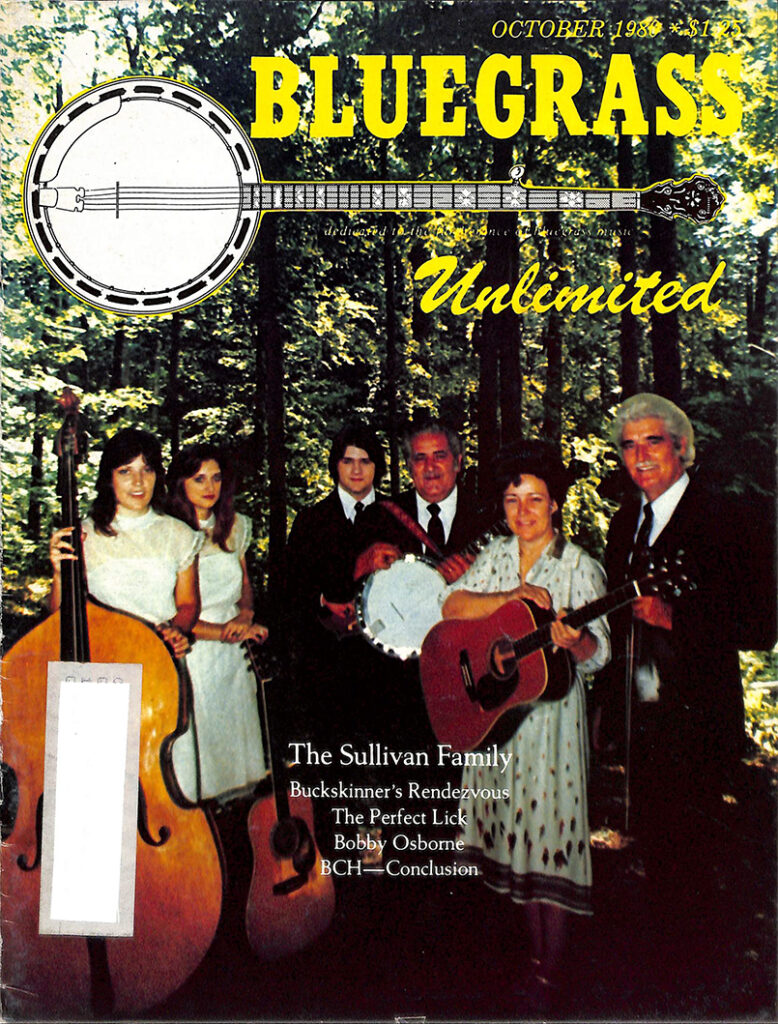
The Sullivan Family of St. Stephens, Alabama, represent a synthesis of two of the strongest and most vital American musics: gospel and bluegrass. It is a powerful combination, the melding of these two musical styles, and the driving, emotional music of the Sullivan Family is no small part of its current growth in popularity.
The nucleus of the Sullivan Family begins early in this century, with a logging contractor named J.B. Sullivan and three of his musically oriented children, Arthur, Jerry, and Suzie.
The group’s longtime spokesman, Enoch Sullivan, recalls “My grandad on my dad’s side, J.B. Sullivan, was one of the finest drop-thumb banjo players; it was the cleanest sound I’d ever heard. We all used to play a lot of what we called frolic music. We played a lot of dances where you’d go over to somebody’s house and take all the furniture out and have an all night dance. But then my dad was converted when I was very young, and started into church work when I was seven or eight years old, so due to religious beliefs we never played anything but gospel music after that.”
Arthur Sullivan’s conversion was the result of a near-fatal illness in 1939, and after his recovery he devoted his life to the Pentecostal Church as a full-time preacher and gospel singer. Arthur played mandolin and guitar, and, according to Enoch, “he was a good singer, a hard singer, in that good old fashioned hard style. Loud—he sung loud, like Roy Acuff. Loud. He believed in good time, kept good rhythm, and sung real loud so people would enjoy it—and they did!”
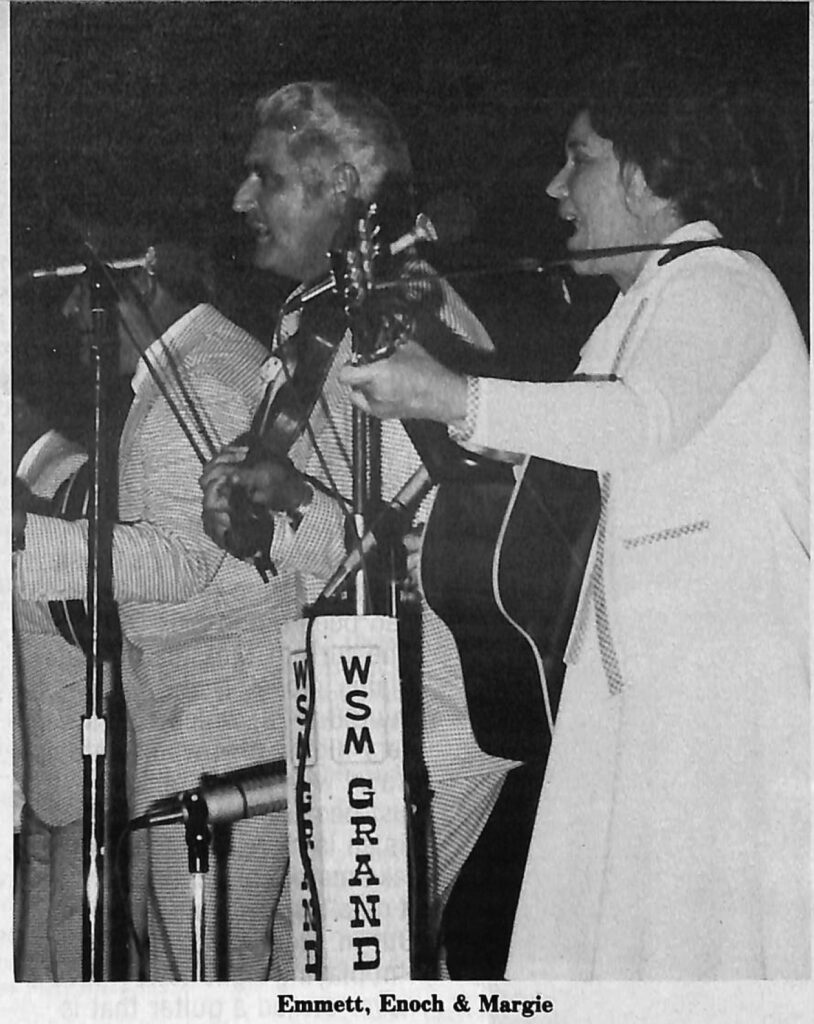
To this he added his younger brother Jerry on guitar, his son Enoch on fiddle (he’d learned from an earlier associate of the family, Bud Hiram Lane), and the trio became more and more popular. The personnel fluctuated during the 1940s, and from time to time included Suzie Sullivan, another of Arthur’s brothers J.B. and his wife, and the youngest brother, Aubrey. Though their musical inspiration was varied, Enoch claims the Sullivan Family of that era sounded very much like the Mainer’s Mountaineers, a group they admired greatly.
The first major change—or perhaps evolution—in the Sullivan Family sound occurred when young Enoch married Margie Brewster on December 16, 1949, adding a distinct, unique, and fervent voice to the Sullivan sound.
Born near Winnsboro, Louisiana, Margie grew up in a musical family, and at the age of thirteen began traveling as a singer and guitarist with an evangelist named Helen Chain. There was plenty of music on the radio and in person in those days as well: “There were so many great artists featured on KWKH when I was young; there was Hank Williams, Johnny and Jack and Kitty Wells and the Bailes Brothers…just so many of them, and you could hear them three or four times a week, or see them for $ .20 or $ .25 at little country schools. Of course, I listened to Bill Monroe on the radio, and Roy Acuff.
“Then, too, Molly O’Day and Kitty Wells and Wilma Lee Cooper had an effect on my style—I never tried to copy anyone, but you can’t help but be influenced. I just loved that mountain style. Of course, back then it was pretty well just called country music, not necessarily bluegrass. But we didn’t get to hear of people like the Stanley Brothers until later on. We were in such a rural area, and communication was not what it is now.”
Though they had spent nearly a decade preaching and playing, it was right around this time that they mark the beginning of their professional career, for it was then that they obtained a radio program. “That’s when we feel we truly became a professional band,” says Enoch, “because radio then was the going thing—if you were on radio, you had it made. We started our first radio work on WRJW in Picayune, Mississippi, and at that time the group was my dad, myself, Aubrey, and Margie. That was the first radio work we did as The Sullivan Family.”
In the early 1950s the increasingly popular Sullivan Family Gospel Singers (as they were known then) were joined by Enoch’s younger brother Emmett who graduated from his grandfather’s five string frailing style to three finger Scruggs style playing. Learning to play simply by listening to radio and records, Emmett became a professional bluegrass banjoist before he had ever seen one played in that style.
His addition to the group moved them from their semi-string band, semi-gospel quartet sound squarely into the then-emerging field of bluegrass. It was far from a creamy success story, however, for although the Sullivans stayed busy, even through the difficult rock & roll era, playing the unusual musical hybrid called bluegrass gospel was sometimes hard work: “When it was created,” according to Enoch, “there wasn’t much market for it. We had to create a market for it. It was hard to get the work, hard to stay on the road.”
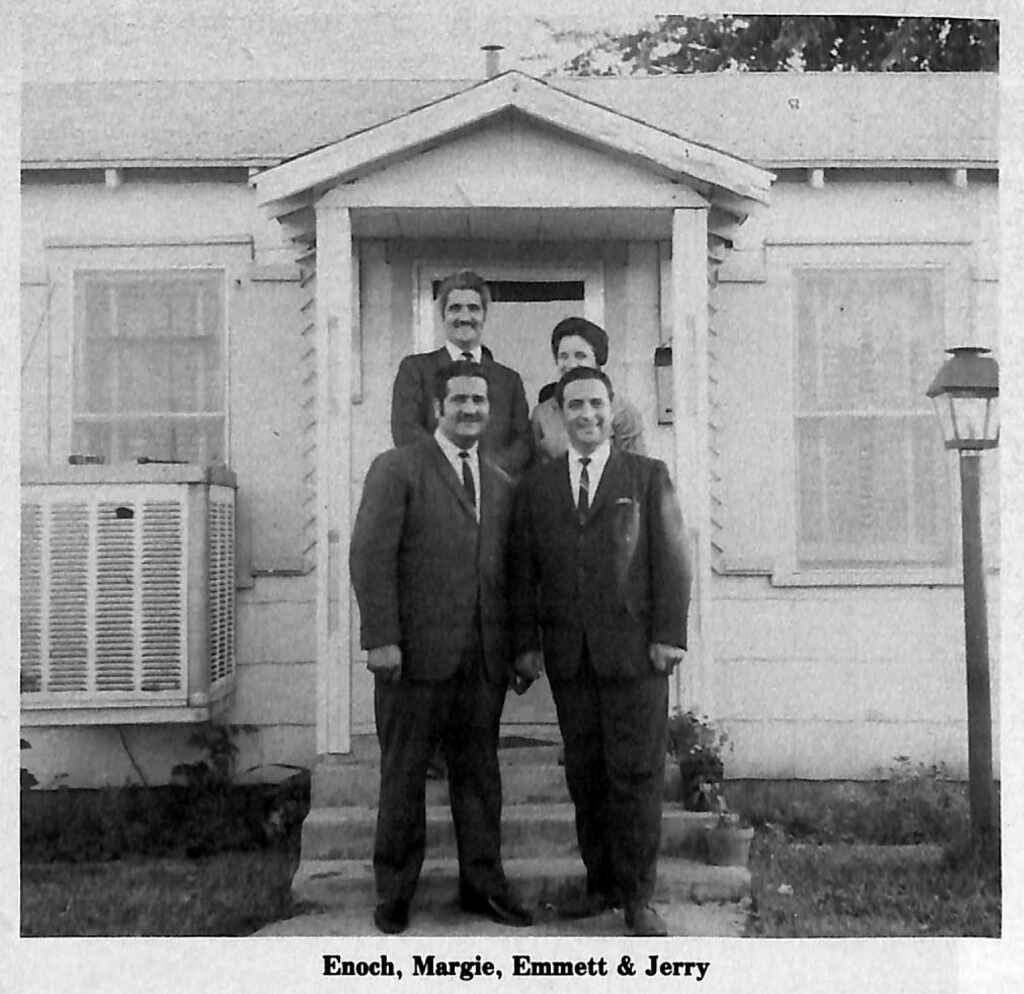
Though it might have made more financial sense to opt for a more contemporary gospel-quartet sound, style and image, the Sullivans steadfastly refused to do so: “I often say it was because we don’t know how to do anything else, but of course that’s really not quite accurate. We just don’t put the time in trying to learn anything else. What you do is what you like the best, and we love bluegrass music better than anything else, so we’ve suffered through the hard times with it. If we’re going to play at all, we want it to be bluegrass; if we can’t, well, we’d probably just be out of it. We just love it and are dedicated to it, and though we could have done other things, this is what we wanted to do. At times it was very hard, but it’s all we wanted to do.”
Perhaps the hardest time of all came in 1957, when Arthur Sullivan passed away. “We didn’t know how we was going to do it, but we had to do it. We figured he’d want us to. So we did, and that’s when I started MCing, or fronting the group” said Enoch. “At the time of his death we were rehearsing for our first record—I remember he was in on some of the rehearsals—but he died before we recorded it. Since then the three of us have been the core of the sound, through thick and thin, though we’ve always tried to have good musicians with us.”
And surely one of the Sullivan’s claims to fame in bluegrass circles has been the calibre of sidemen they have attracted, a long list containing such notable names as Joe Stuart, Carl Jackson, Marty Stuart, Clyde Baum, among many others.
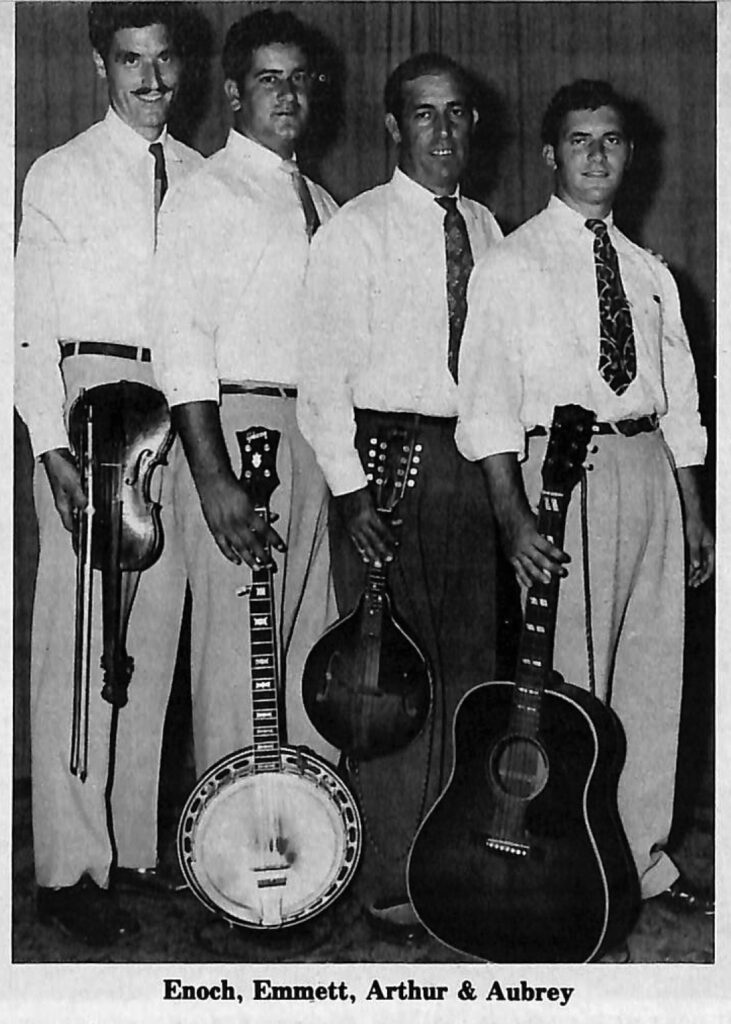
The Sullivan Family pressed on through the tough years and the good ones, building a firm foundation of regional churches happy to have them back on an occasional or regular basis. Though now they play a great many bluegrass festivals, it is this network upon which they still rely for a great many dates. Margie says “It’s a wonderful feeling to have been in this work all these years, and be able to go back to places we played when we first started. It means a lot to me. We don’t like to close doors behind us, any doors, for either the commercial or the church work. We like to be able to meet friends and keep them.”
Their first step outside of this large regional network of churches and radio programs (and later television) was their appearance at Bill Monroe’s Bean Blossom festival in 1968. They caused quite a stir there with their fervent, exhortative music and driving bluegrass backup, and the appearance introduced them to an entirely new audience—the mainstream bluegrass festival goer—they had not played to before.
“Playing that festival, and the festivals that followed it,” recalls Margie, “definitely have broadened our working area. And, of course, the more you got the more the demand is created for you, and we find ourselves getting calls from further and further away—it’s a chain reaction sort of thing. We worked in over 21 states last year, and already we’ve worked in Delaware and Oklahoma and Missouri and Texas, and have several new ones this year we’ve never done…it just keeps snowballing. In fact, it’s at the point, with festivals starting on Mondays and Tuesdays, that a lot of times we’ll play two and three different festivals the same week!”
Despite the enjoyable times and the fine music they’ve made with their stellar band members in the past, their current lineup is doubtless the most satisfying to them, for their bass player, Lisa Sullivan (Enoch and Margie’s daughter) represents the fourth generation of performing Sullivan, and the third devoted solely to bluegrass gospel.
Enoch describes the current band in his own meaningful and characteristic way: “We have our youngest daughter Lisa playing the bass—she is eighteen years old. And we have a brother and sister, Joe and Vickie Cook. Joe plays the mandolin with us, and can play all instruments, and Vickie plays the guitar and the five string banjo. Right now we’ve got three ladies and three men, and I think it’s a great step. Those kids! Vickie’s eighteen, and Lisa’s eighteen, and Joe is seventeen, and I think it’s the greatest sound we ever had. We can present bluegrass gospel so many different ways, and I’m so proud now of our band, and of what people say about it. Mister Bill Monroe told me we had brought a lot of people to his festival the last time we played it, but that we had the best group now that we had ever had.
“What makes it good is the variety we can present. We’ve got several different ways that we feature in each show. If we sing the good old fashioned four-part quartet I usually sing lead, and Emmett sings the bass, and Joe Cook sings that baritone part, and Margie sings tenor, and that makes a good quartet sound. Then, by adding Vickie on some of the songs, she has a high voice, and she can sing above Margie and give us good five part harmony. Then, of course, Margie and Emmett and I feature the old trio numbers, where Margie sings the lead, and I sing baritone and Emmett sings low baritone. And, too, we switch the parts a lot, of course, if it gets too high for one of us to sing—we’ll just move around.
“Then we have the lady trio now that I think is real good, the bluegrass lady trio—people really like that. And of course Margie sings a solo, and Vickie sings a solo, and Lisa sings a solo, and then Vickie and Joe sing duets which are good…there are a lot of different ways we can feature it, you know. We try to do a good variety show, with twin fiddles and the little lady playing the banjo, which everybody likes.
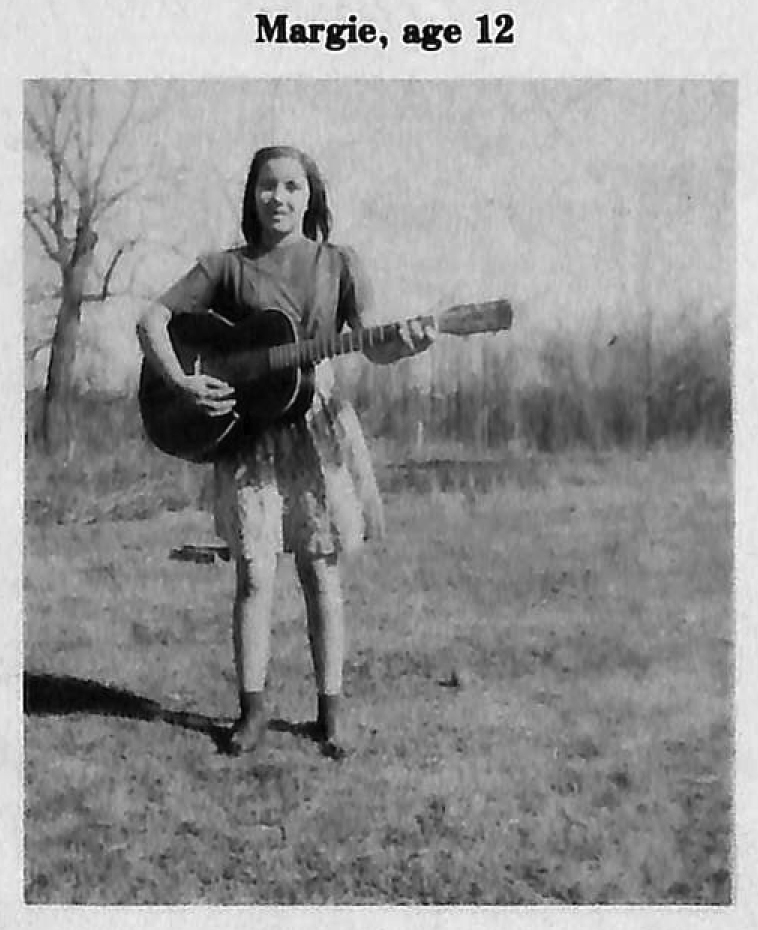
As for Lisa’s appearance with the group, Marge is straightforward and direct: “Oh, that’s the thrill of our lives! We always wanted our children to be in it, but although all of them can play, the baby is the only one that seems to want to follow it. It’s a real thrill to have her.” Interestingly, Emmett’s children, though younger, are taking an interest in bluegrass gospel music, and though it may take a few years there may be more fourth-generation musical Sullivans ready to join the Family in years to come.”
Though Enoch states that they are now in a position, after years of grueling roadwork, to retire should they care to, their dedication to their music remains firm. “We have great plans for our music. When we started out years ago there was no market for this music, and I like to think that maybe we helped create a market for it, a wide open field for bluegrass gospel.
“We used to worry about how people would receive our bluegrass gospel music, but I never feel bad about going anywhere to sing bluegrass gospel music. We know what we’re going to do; we’ve done been there.
“You know, we go in places where they might not necessarily like bluegrass, but when we leave, we leave fans for bluegrass, not just for the Sullivan Family. I think that everybody, if we keep on plugging away, that we are all the time gaining—you can’t keep at it without gaining. You gain friends, you gain fans.
“I would like to think that what we do is goodwill ambassadors of bluegrass gospel music.”
Share this article
2 Comments
Leave a Comment Cancel Reply
This site uses Akismet to reduce spam. Learn how your comment data is processed.
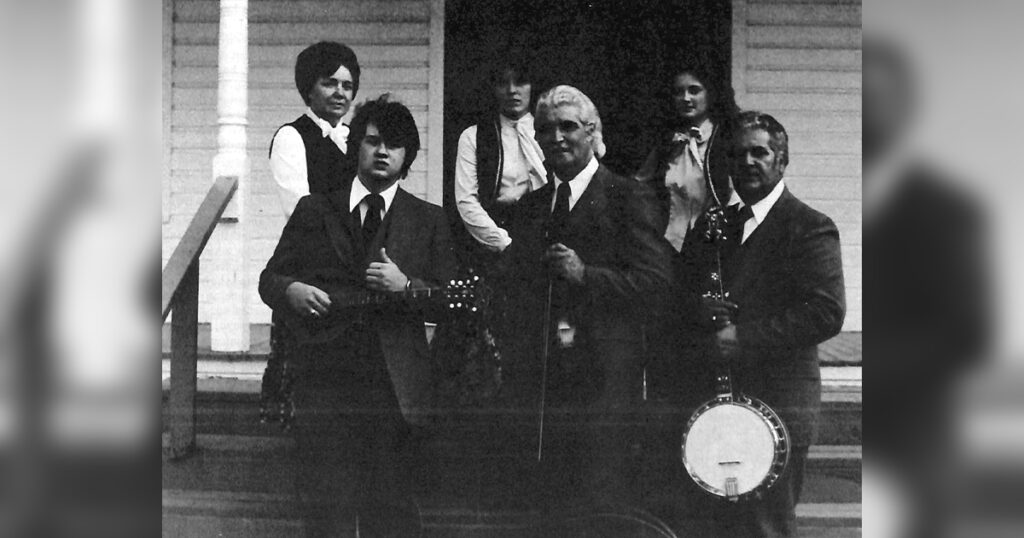
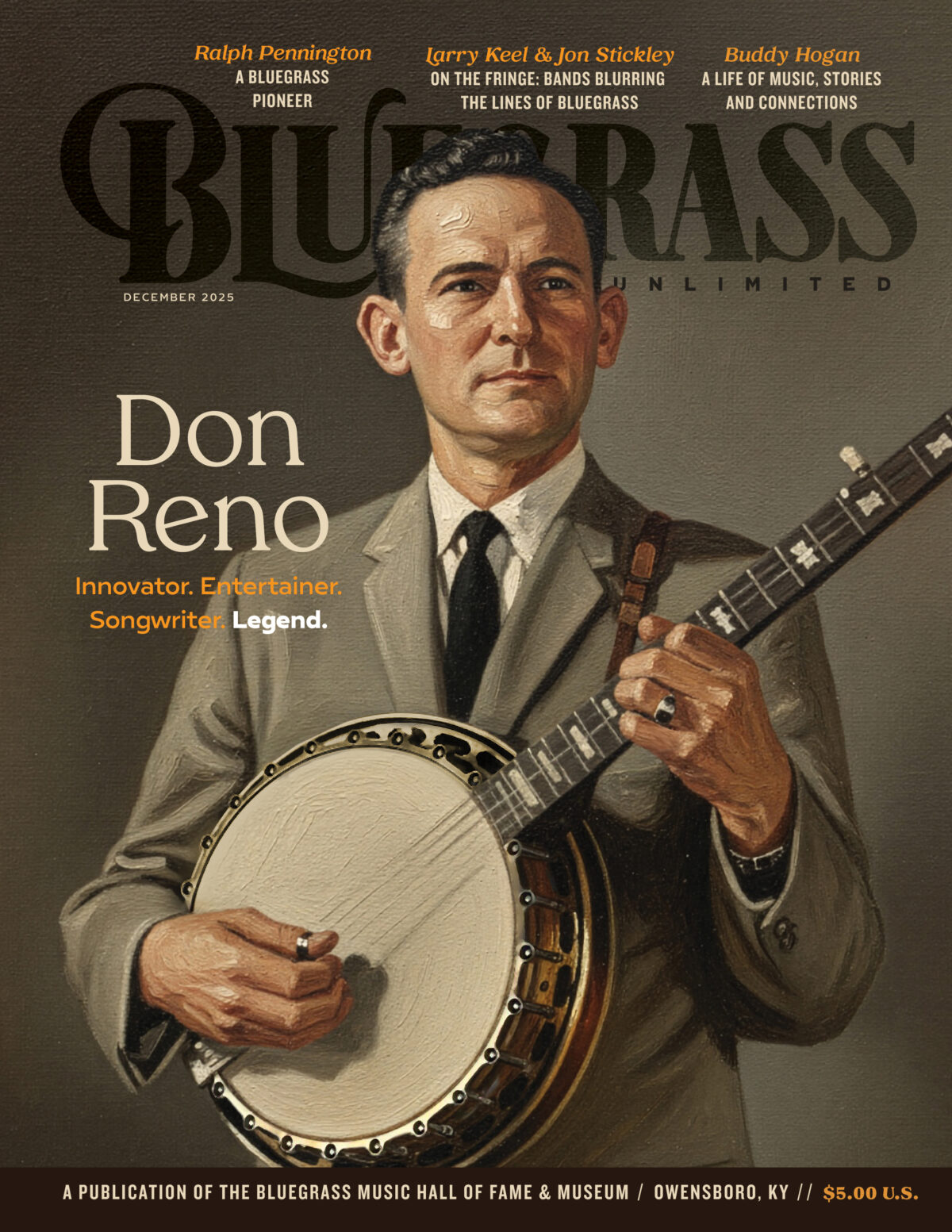
They made a lasting and wonderful impression on me as young kid and one of my fondest memories would be that one time for the days I was blessed to pick with Enoch and Margie in central fla, then he told the people that I reminded him of his brother Emmett which had already crossed over, and I got to ride on one of the busses they had, and over the years i would play with my family on their festival in St Steven’s Ala, they forever have a place in my heart and I am thankful I was privileged to meet many of the musicians and people that played and sang with the first family of bluegrass gospel music, The Sullivan Family
How surprising is this to find this long article on Facebook about my close Friends, the Sullivan’s. I was scrolling through reading the article and surprisingly enough I see a picture of Bro Enoch, Emmiet, Jerry, and the First Lady of Blue Grass gospel music SISTER MARGIE. This picture was taken at my wife’s and my first home in Fort Worth Texas. This was on one of their many trips to North Texas to sing and preach the gospel. I had the privilege to schedule these appearances for this great gospel group over the 60s, 70s, and early 80s. Bro Enoch never charged for these concerts and only ask for a LOVE offering which once you heard them, it was not hard to get. Speaking of influences, I have two sons who were impressed with their music to the point of becoming accomplished musicians. On one of their many visits in our home I mentioned to Emmit that I wanted him to help me locate a banjo for my oldest son. When I arrived home from work the following afternoon, Emmit told me to come with him to a local pawn shop. He instructed me on what to offer the owner for a banjo that looked to me like it should be in a garage sale. He told me that the proprietor did not know what he had. Long story short I purchased a limited edition Banjo which Emmit put a new head and strings on and my son had a limited edition model banjo which he still plays today. My son was privileged to play banjo for the Sullivan’s in their last trip to North Texas. This was after Emmits death and to see the expression on Bro Enoch’s face as David played some of Emmits licks on the banjo was beyond amazing. Priceless memories. The trip that the picture I mentioned above was taken, the station wagon that they were traveling in carried another passenger when they started home. Besides the four musicians, Emmit had acquired a new coon hound. The method of accusation I will not discuss here. Great people who I loved like my own family.